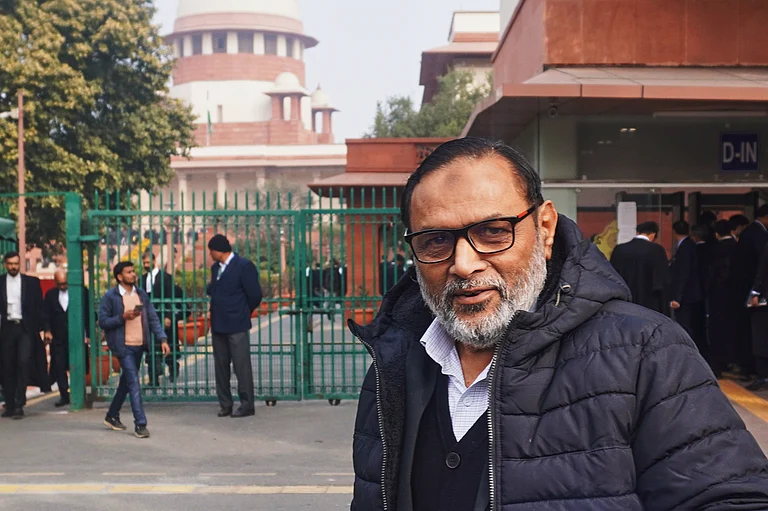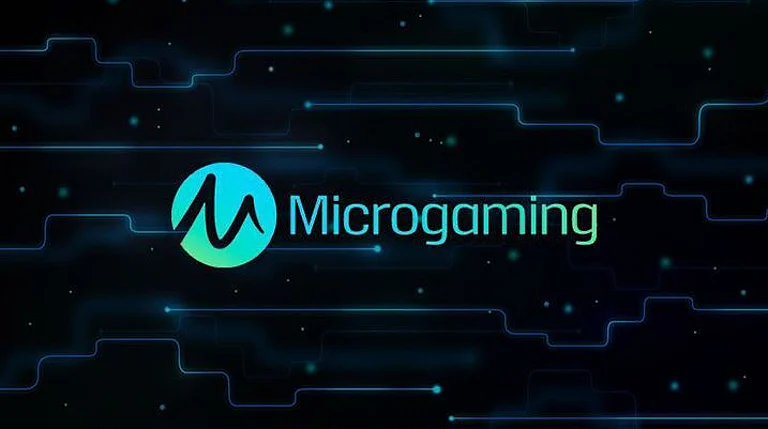In late December 2022, the small town of Tirthahalli in Shivamogga district, home of famous Kannada poet Kuvempu (KV Puttappa), saw protests break out when the cultural forum ‘Kadagolu Vichara Manthana Vedike’ invited Rohith Chakrathirtha for a talk on “Nationalism in Kuvempu’s literature”.
Chakrathirtha is a member of the Kannada Development Authority and the former chairman of the Karnataka State Textbook Revision Committee, who was ousted after he presided over school curriculum changes that were deemed as ‘saffronisation’. The recommended changes included the addition of a speech by RSS founder KB Hedgewar, deletion of works by poets from the Bandaya literary movement—a progressive literary movement which aimed to foreground marginalised narratives—and Dalit poets, deletion of lessons on social reformers such as Savitribai Phule, Narayana Guru and BR Ambedkar and undesirable modifications to a lesson on the 12th century social reformer, Basavanna.
In the caustic posts on social media, Chakrathirtha had also criticised the ‘Vishwamanava’ (universal human) philosophy in which Kuvempu professed that to experience truth on one’s own terms and become a universal human, human beings have to go beyond distinctions of caste, language and other social identities. Last May, Chakrathritha was also pulled up on social media for sharing a spoof of the Karnataka state song ‘Jaya Bharata Jananeeya Tanujate’, also penned by Kuvempu.
Those who protested against Chakrathirtha included writers, activists and politicians —such as former education minister Kimmane Rathnakar, a former Tirthahalli legislator—who questioned the intent behind inviting a speaker who was no scholar of Kannada literature and had denigrated the state’s most coveted literary figure.
The police controlled the protests in Tirthahalli, and the programme went on. Ironically, the event featuring Chakrathirtha was held in an auditorium named after the region’s most famous socialist leader, Shantaveri Gopala Gowda.

In another instance, in July 2022, a performance of Jotegiruvana Chandira, a Kannada adaptation of Joseph Stein’s Fiddler on the Roof by well-known writer and lyricist Jayant Kaikini, was forcibly stopped by Bajrang Dal members in the village of Anavatti in Shivamogga district. The Bajrang Dal objected to the presence of an inter-religious marriage in the play and claimed that they wouldn’t allow a play featuring Muslim characters to be staged in a Veerashaiva (a Lingayat sect) marriage hall.
A couple of decades ago, such incidents would have invited large-scale opposition by the numerous cultural institutions in the region. But all that was visible now was a few progressive voices waging a losing battle.
As the BJP began to gain political ground in the region since the 1990s, especially under former chief minister BS Yediyurappa who contested from Shikaripura in Shivamogga district, the political dominance of the Hindu right wing started to result in an ideological shift in the cultural scene in the region that had championed and nurtured modernist literary and theatre movements, socialist politics, and resistance movements in Karnataka.
In the 2018 assembly elections, the BJP won in all seven constituencies in the district, and in the recent few years its impact has become obvious within cultural institutions. Today, Shivamogga is a mere shadow of the vibrant cultural centre it once was and is a distressing example of the gradual erosion of a progressive space for arts and culture because of a politics whose bedrock is fear, communalisation, and the indifference of civil society.

While Ninasam embraced the world in Heggodu, Shivamogga city championed cultural discourse through institutions such as the Karnataka Sangha, District Sahitya Parishad and the Sahyadri Film Society. Established in 1930 by literature enthusiasts, the Karnataka Sangha started as an effort to critically engage with ‘Navodaya’, the early 20th century Kannada literary movement that marked the beginning of modern Kannada literature and of which Kuvempu was an important part.
Award winning filmmaker Girish Kasaravalli, whose oeuvre includes celebrated works like Ghatashraddha (1977) and Dweepa (2002), for instance, credits Shivamogga’s book launches, discussions, and the literary environment for shaping his literary sensibility and says the culture “had a significant influence on [his] young mind.” But Karnataka Sangha and its patrons did not limit themselves to discussing literature in isolation but rather used it as a tool to respond to socio-political issues.
Professor Nagaraj Rao, who has served in both institutions in various roles, recalls UR Ananthamurthy and KV Subanna mobilising people during the Emergency to raise awareness of state oppression. Prof Rao says Ananthamurthy translated Snehalatha Reddy’s prison diaries from English to Kannada—records which the actor and activist had kept when imprisoned for 8 months during the Emergency of the mid-1970s.
“We would sell the book for one rupee each,” says Rao.
Professor Rajendra Chenni, cultural critic and scholar, remembers how the Karnataka Sangha was used as the venue to plan and strategise the ‘Tunga Moola Ulisi’ (Save the origin of Tunga) movement in the 1990s against the mining at the river basin by Kudremukh Iron Ore Company Limited. The movement, which brought together activists, writers, artists and politicians, was successful in convincing the then state government to stop the mining.
Having lived in Shivamogga from 1978 to 1992, first as a literature student and then as a teacher, writer Rahamath Tarikere says, “There were many people who lived simple lives and were full of idealism. There were Gandhians and landlords who had given up huge tracts of land during the Kagodu Satyagraha.”
It was a peasant uprising in 1951 against exploitative tenancy terms. Social justice and inclusivity underscored the cultural efforts at Shivamogga, as political rebellions like the Kagodu Satyagraha birthed both socialist politics, especially by legislator Shantaveri Gopala Gowda, and socialist literature. From here emerged leaders like JH Patel, S Bangarappa, and Kagodu Thimappa who became popular by championing socialist ideals.

The Dalit Sangharsh Samiti (DSS) founded by Basappa Krishnappa, a lecturer in Bhadravathi, also gained momentum in Shivamogga. Rao, who had helped organise Karnataka’s first Dalit literature conference in 1979, says Krishnappa pushed literary critics to think about Dalits in Kannada literature, including in Kuvempu’s works.
At the same time, the state farmers’ union called the ‘Karnataka Rajya Raitha Sangha’ (KRRS), intensified their fight for farmers’ rights and identity.
Moreover, when Hindu Right wing forces laid claim to the Baba Budangiri Sufi shrine as an exclusively Hindu place of worship in the neighbouring Chikmagalur district, cultural leaders of Shivamogga region established the ‘Komu Souharda Vedike’ (Forum for Communal Harmony) to mobilise people, and successfully resisted attempts to take over the syncretic shrine. Archival records reveal massive public participation in these social and political movements. Apart from support from civil society, Chenni, a founding member of the ‘Komu Souharda Vedike,’ thinks the success of the agitations back then ought to be attributed to the synergy between various struggles.
He explains, “For instance, the KRRS participated in ‘Jaati Vinaasha’ (caste eradication) initiatives by organising inter-caste marriages, and the DSS fought for land reforms”.
Although cultural discourse was dominated by progressive politics and socialist ideals until the 2000s, Hindu nationalist organisations also have a long history in Shivamogga. Hindutva ideologue VD Savarkar and Nathuram Godse—MK Gandhi’s assassin— both visited Shivamogga in the 1940s to address a Hindu Mahasabha rally.
Communal clashes are not new to the city. Ganesh Chaturthi processions in the city have often resulted in communal violence. Chenni recalls an incident when Kannada writer Polanki Ramamurthy was attacked at Kamala Nehru Memorial National College in Shivamogga during a discussion of his book Seetayana.
“ABVP members and a few BJP people—including a prominent leader today—joined the event, and after Ramamurthy finished his speech, rushed towards the stage and attempted to attack him,” says Chenni.
The difference, however, is that while the ABVP and the RSS were active in the region, the more aggressive groups such as the Bajrang Dal and VHP were not a visible presence in the region.
Chakravarthy says, “The roots of communalism were always there in Shivamogga. But communalism had not yet entered the hearts and souls of the people.”

Shivamogga today is a very different place. Ninasam, Karnataka Sangha and the Sahyadri Film Society all still exist. But they no longer exert the same level of influence on cultural discourse. Lamenting that the younger generation did not show any interest, Rao says, “The institutions have lost focus and look tired. There is a need for critical engagement with issues and not just programming events to fill the calendar.”
Unlike in the past, when it was hard to find room to even stand during a literary event at the Karnataka Sangha, the audience today is thin. Chenni says students and young people rarely participate in numbers. The outcomes of globalisation and technological advancements such as ubiquitous digital entertainment, strident media and increased urbanisation have also contributed to the disinterest of young people.
“In a post-globalisation world, economic concerns have swamped the middle class and resulted in the corporatisation of consciousness,” says Chakravarthy.
Universities have also changed their responses to the involvement of faculty and students in protests and agitations. Chenni illustrates this with the example of Kuvempu University: “Earlier, when we participated in protests as part of the ‘Komu Souharda Vedike’ and there was pressure to take action on us, the Vice-chancellor did not ask us any questions other than make sure that we applied for leave on protest days. Now, a suspension is guaranteed if an employee of a public university participates in any anti-establishment agitation.”
He says this is because the administrative leadership in universities today is full of ideological sympathisers of the ruling party. The attitude of students has also changed. Again, Chenni gives an example. “When we were branded as Naxalites, students mobilised on their own and launched a protest in support of us. Now students exhibit absolute indifference,” he says.
While cultural institutions are finding it difficult to attract youngsters, political and religious organisations have no such problems. Tellingly, the only dominant agitations in Shivamogga in the last three years were those by Hindu right-wing organisations like the VHP and the Bajrang Dal during the hijab issue in early 2022; and the procession and rioting in the city in February 2022 after a young man named Harsha Jingade, associated with the Bajrang Dal, was murdered. In the second instance, many allege that the ruling party deliberately communalised the killing, which the local police had deemed the result of a gang rivalry, by allowing the funeral procession to be taken out in the city. This led to arson and property damage, especially in the localities of the city populated by Muslims.
Ninasam still runs the theatre institute, and the travelling repertory takes plays to interiors of Karnataka and also organises a shortened version of its culture appreciation workshop but the institution lacks the creative energy and ideological conviction of Subbanna that had won him the Ramon Magsaysay award in 1991. Theatre director and playwright KV Akshara, Subbanna’s son, heads Ninasam today. Chakravarthy bemoans the decline in political and ethical openness in institutions such as Ninasam. Adding to the political neutrality argument, Chenni is of the opinion that cultural institutions have adopted a non-confrontational approach today where they don’t want any “isms” anymore.
Rao cites an incident during the ‘Dharwad Sahitya Sambrahma’ (Dharward Literature Festival) in 2019 when social scientist Shiv Visvanathan’s lecture was disrupted by a few audience members who objected to his mention of army atrocities in Assam and Kashmir. On the next day, a couple of BJP Yuva Morcha members vandalised furniture and demanded an apology from Visvanathan and the organisers.
On occasion, political neutrality results in self-censorship which was also evident in the case of the cancelled play in Anavatti. Chenni said a delegation of progressives went to the police and garnered support for future performances of Kaikini’s play by the affected group, Rangabelaku. But the theatre group did not perform the play again. Rao says such incidents have instilled a fear in many cultural institutions including Ninasam and the Karnataka Sangha, while Chakravarthy is of the opinion that the overpowering emergence of communal politics has led to the capture of cultural institutions by right-wing forces.
On the political front, although the land reforms finally arrived during Devaraj Urs’ chief ministership in early 1970s, the socialist movement lost its fervour after Gopal Gowda’s demise. According to Chenni, the DSS and the KRRS were weakened by internal power struggles and factionalism. He further adds that these radical movements have become parochial today, and as a result, have turned into mere pressure groups. Moreover, public support for social and cultural issues is not visible in the deeply polarised public domain anymore, a phenomenon that Chenni attributes to the erasure of crucial socialist movements, like the Kagodu Satyagraha, from cultural memory. Rao cites the example of many well-known cultural figures writing on their social media against incidents like the invitation to Chakrathirtha and changes in textbooks to argue that people are protesting at an individual level in the absence of institutional support.
Electorally, BJP started gaining ground when BS Yeddiyurappa was elected to the assembly in 1983 from Shikaripura, a taluk in Shivamogga, and deepened after the nationwide religious polarisation since the Babri Masjid demolition. Although the BJP swept the region in 2018, this time around, the ruling party veterans Yeddiyurappa and KS Eshwarappa have decided to retire from electoral politics.
In the fray now in the Shivamogga city constituency are two first-time contestants: Chanabasappa from the BJP and HC Yogesh from the Indian National Congress. Ayanur Manjunath, a sitting MLC and senior BJP leader, resigned and switched over to the JD(S) and will be contesting against the two young leaders. While Channabasappa has grown up in the BJP cadre and believes in the Hindutva ideology, Yogesh has made the promise of a “peaceful Shivamogga” his election plank. In Shikaripura, BY Vijayendra, son of Yeddyurappa, is all set to continue his father’s legacy in the constituency. Despite their claims of not being a dynasty party, BJP has given a ticket to Vijayendra which is a reflection of the power that Yeddyurappa still wields in the region.
Although there is clearly an atmosphere of fear, Kasaravalli is still hopeful: “There is more awareness today and there are several sane voices amongst the young. The problem is the lack of visibility to such voices.” It remains to be seen if the new political blood will herald a change in the cultural politics in the region.
Basav Biradar is a writer, researcher and documentary filmmaker
This appeared in print as "A Crumbling Edifice"
























